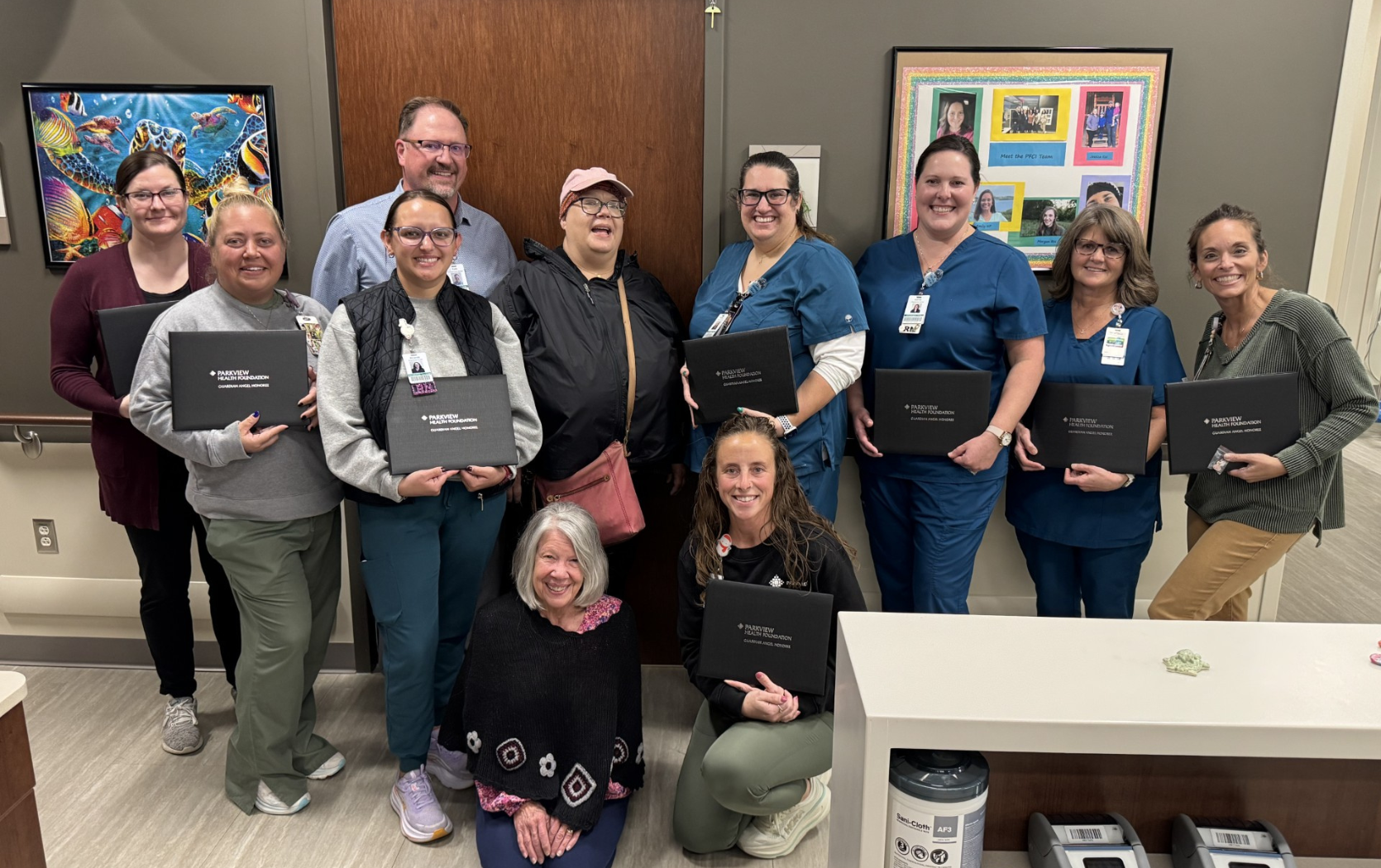
This post was written based on an interview with Christopher Johnson, DO, Orthopedic Oncology Care Team, Parkview Packnett Family Cancer Institute.
A pathologic fracture is a term used for a bone break experienced as a result of a tumor in the bone that has weakened it. This varies from a traumatic fracture, which occurs abruptly, often to an otherwise healthy bone. Pathologic fractures are commonly connected to certain types of cancers, including cancer of the breast, prostate, lung, kidney and lymphoma. These particular cancer diagnoses often lead to metastatic bone disease, meaning the cancer originates in an organ, gland or tissue, and eventually spreads to the bone (approximately 50% of the time).
Prevention and treatment
Because these fractures can greatly impact quality of life, presenting pain and limiting the individual’s ability to function normally, optimizing bone health for people who have metastatic bone disease is really important. The orthopedic oncology team works as part of a multidisciplinary effort with medical oncology, radiation oncology and interventional radiology to optimize outcomes for patients.
There are things we can do to prevent these breaks, including medications, chemotherapy and radiation, depending on the patient and circumstances. For example, people who are not at risk for fracture–the tumor is in a non-weight-bearing bone, etc.–could benefit from radiation. But there are many combinations of circumstances driving these decisions.
In situations in which a patient is at a high risk for a pathologic fracture, perhaps in pain, surgery would be the best course of treatment. If someone had a large tumor in their hip, for instance, we can be proactive with surgical intervention to prevent the break from occurring. This could involve intramedullary nailing, in which we place a titanium rod in the bone marrow to stabilize the bone, or complex joint replacement to reconstruct the affected area. We can also do complex surgery for acetabular metastasis pathologic fracture. The hip socket is a common place for cancer to spread, which creates challenges from a surgical standpoint, but we’ve modified techniques to successfully reinforce the pelvic bone–a procedure only an orthopedic oncologist can perform. In some cases, these measures are done to prevent a break, while in others, we will perform surgery after a break, to fix the fracture.
An orthopedic oncologist would be the specialist to help evaluate the patient’s risk of fracture and then coordinate with the medical and radiation oncologists to pull together the big picture for everybody.
Treatment depends on the location of the tumor, type of cancer, and patient longevity and prognosis. Different cancers behave differently biologically, and, of course, each person is different. That’s why it’s so important to have that multidisciplinary approach to ensure the patient receives the best, most balanced treatment plan. It takes a team approach to deliver optimal results.
Diagnosis
There are a lot of scenarios in which an impending pathologic fracture would be discovered and evaluated. When cancer spreads to the bone, or a patient has a cancer often known to progress to metastatic bone disease, that’s a red flag for both the medical oncologist and orthopedic oncologist.
Generally speaking, any time someone has cancer and notices significant discomfort, they should be evaluated by an orthopedic oncologist and do imaging to explore a potential issue. To be more specific, patients with known stage 4 cancer or metastatic bone disease, who are experiencing pain in a bone or joint should see an orthopedic oncologist.
Patients can ask for a referral or self-refer for an appointment. If you wish to request a consult, call Parkview Packnett Family Cancer Institute at 833-724-8326 or 260-266-7100 for assistance.



